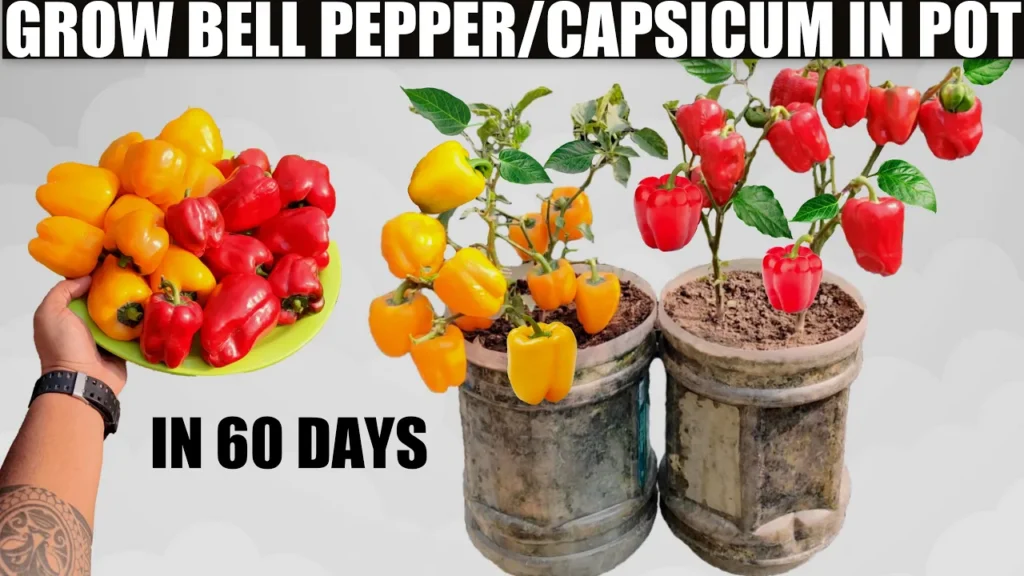
This article is about how to grow bell peppers, or capsicums, from seeds to harvest in the simplest way possible. Even though you are a professional gardener or a novice, you will realize that with the correct environment and management, you can take pleasure in a lot of these colorful and healthy veggies. Learning how to grow bell peppers is a rewarding endeavor that enhances your gardening skills.
Table of Contents
- Introduction to Growing Bell Peppers
- Why Bell Peppers are Easy to Grow
- Selecting Quality Seeds
- Preparing the Soil Mix
- Sowing the Seeds
- Transplanting Seedlings
- Container Selection and Soil Requirements
- Caring for Your Capsicum Plants
- Managing Pests and Diseases
- Understanding the Growth Cycle
- Harvesting Bell Peppers
- Storing Your Harvest
- FAQs about Growing Bell Peppers
Introduction to How To Grow Bell Peppers
For any person who finds comfort in gardening, growing bell peppers is one of the best experiences. These vivid vegetables not only beautify your garden but can also supply healthful vitamins and nutrients. The good news is that bell peppers can be cultivated in as many different situations as you want to, ranging from extensive gardens to the tiniest balcony imaginable. A bit of training and the correct techniques will enable you to grow these peppers that are both tasty and nutritious.
Why Bell Peppers are Easy to Grow
Starting with bell peppers is an easy task. They are portable container plants that naturally fit in a sunlit area and sometimes even a shaded area. Their hardiness is what makes them a great option for the ones who are new to the gardening field. If the bell peppers are taken care of properly, the harvest of these fruits can be impressive. They are also monoecious plants (which means they do not require more plants to bear fruit).
Key Benefits of Growing Bell Peppers
- Versatile Growing Conditions: They thrive in various environments, including containers and small gardens.
- Minimal Maintenance: Bell peppers require basic care, making them ideal for beginners.
- Rich in Nutrients: They are an excellent source of vitamins A and C, which contribute to overall health.
Selecting Quality Seeds
The key to a fruitful crop is the choice of correct seeds. It is best to buy top-grade seeds from well-known suppliers. An excellent option is to choose imported seeds from reliable companies such as Syngenta. For best outcomes, one should select seeds that are distinctly marked for bell peppers.
Tips for Selecting Seeds
- Check the expiration date on the seed packet.
- Choose seeds that are well-packaged and stored in a dry place.
- Consider heirloom varieties for unique flavors and colors.
Preparing the Soil Mix
Soil quality is one of the major determinant factors for a bell pepper’s growth. If a soil mix is prepared well so that it can have good drainage and aeration, the roots will be able to, in turn, grow freely. You could either use a commercial potting mix or you could create your own. A recommended mixture contains 60% coco peat and 40% vermicompost or leaf mold.
Steps to Prepare the Soil Mix
- Combine the ingredients in a clean container.
- Mix thoroughly to ensure even distribution.
- Firm the mixture lightly to eliminate air pockets.
- Water the mix well before sowing seeds.
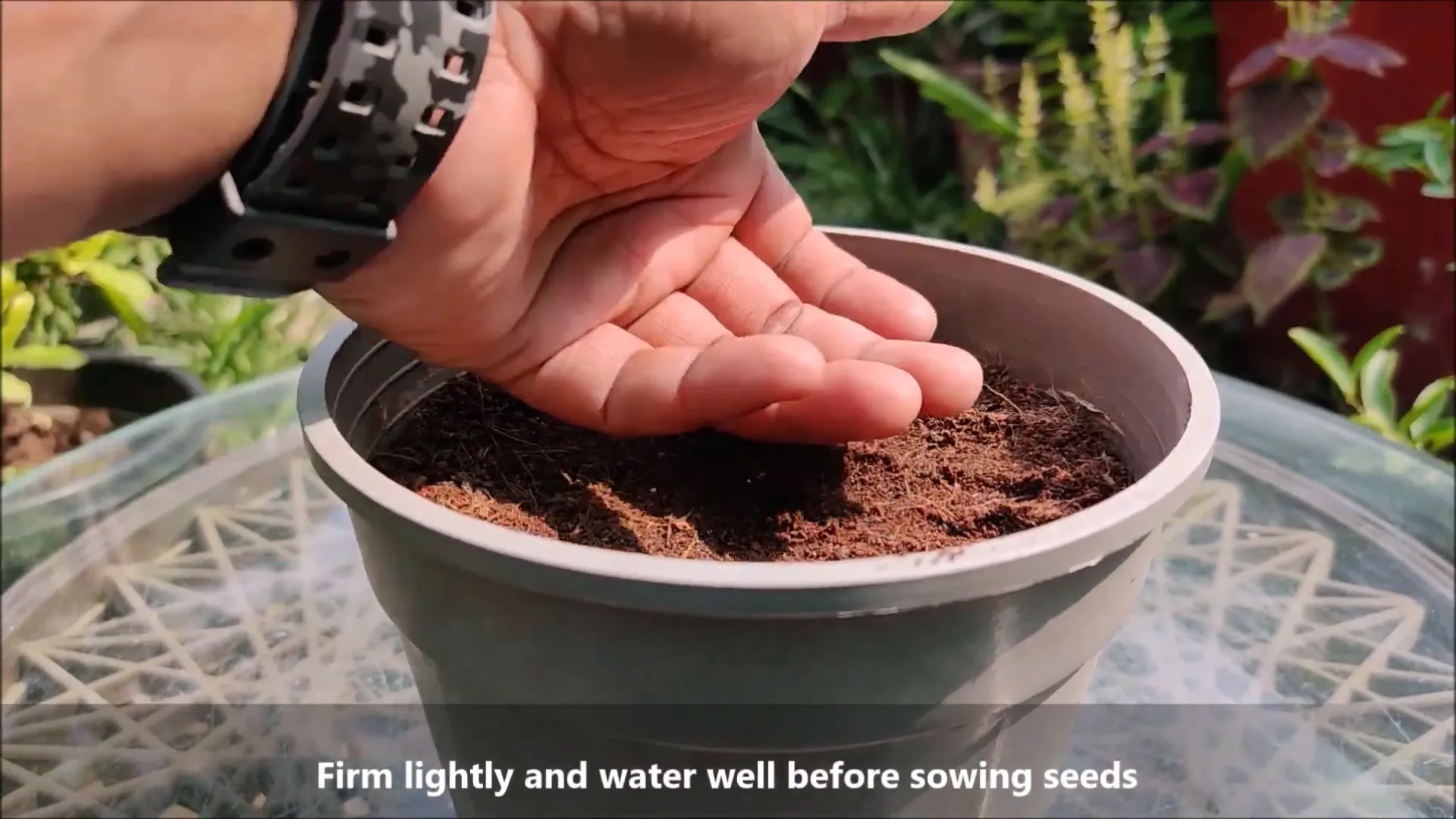
How to grow bell peppers can be a fun project for gardeners of any skill level. These vibrant vegetables are not only visually appealing but also provide essential nutrients.
Sowing the Seeds
As soon as you have prepared your soil mix, you can begin to plant the seeds. Take small pots and fill them with the mix that you have prepared, making sure to leave some space at the top. For the best growth, sow the seeds about one to two inches apart. Lightly cover the seeds with soil and press gently to ensure good seed-to-soil contact.
Best Practices for Sowing Seeds
- Sow seeds in a well-lit area, ensuring they receive ample sunlight.
- Keep the soil consistently damp but not soggy.
- Expect germination to occur within seven to nine days.
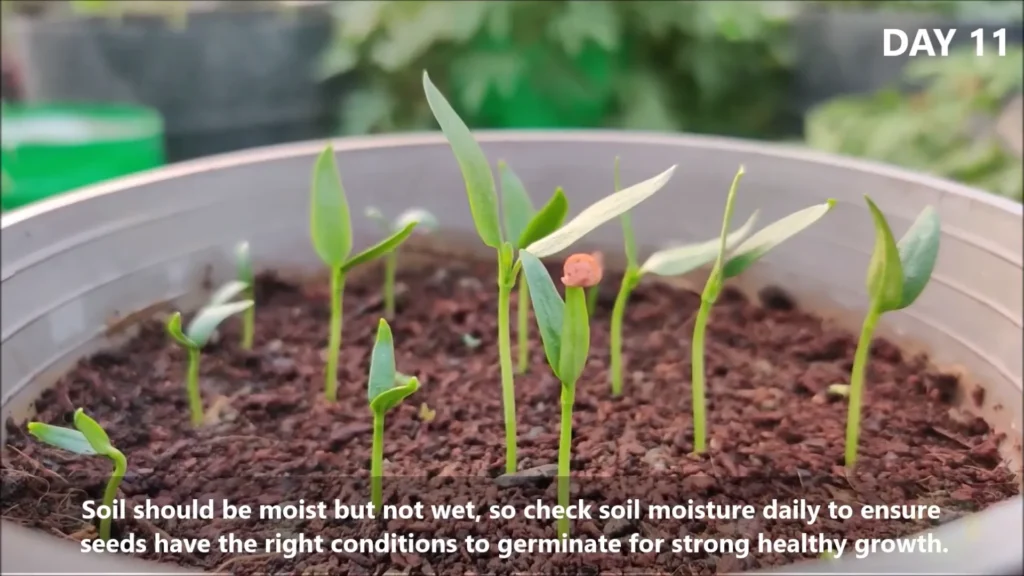
Transplanting Seedlings
The day will come when the seedlings in the pots will have to be shifted to bigger pots. This is a must-follow step to prevent the plants from being underdeveloped. A mini trowel can be used to take out the seedlings from the pots carefully and not to injure the roots in any way.
Transplanting Steps
- Select larger containers, ideally 15 to 18 inches deep and wide.
- Ensure the containers have drainage holes to prevent waterlogging.
- Fill with a suitable soil mix that includes garden soil, cattle manure, and river sand.
- Plant the seedlings about 6 to 8 inches apart to allow for growth.
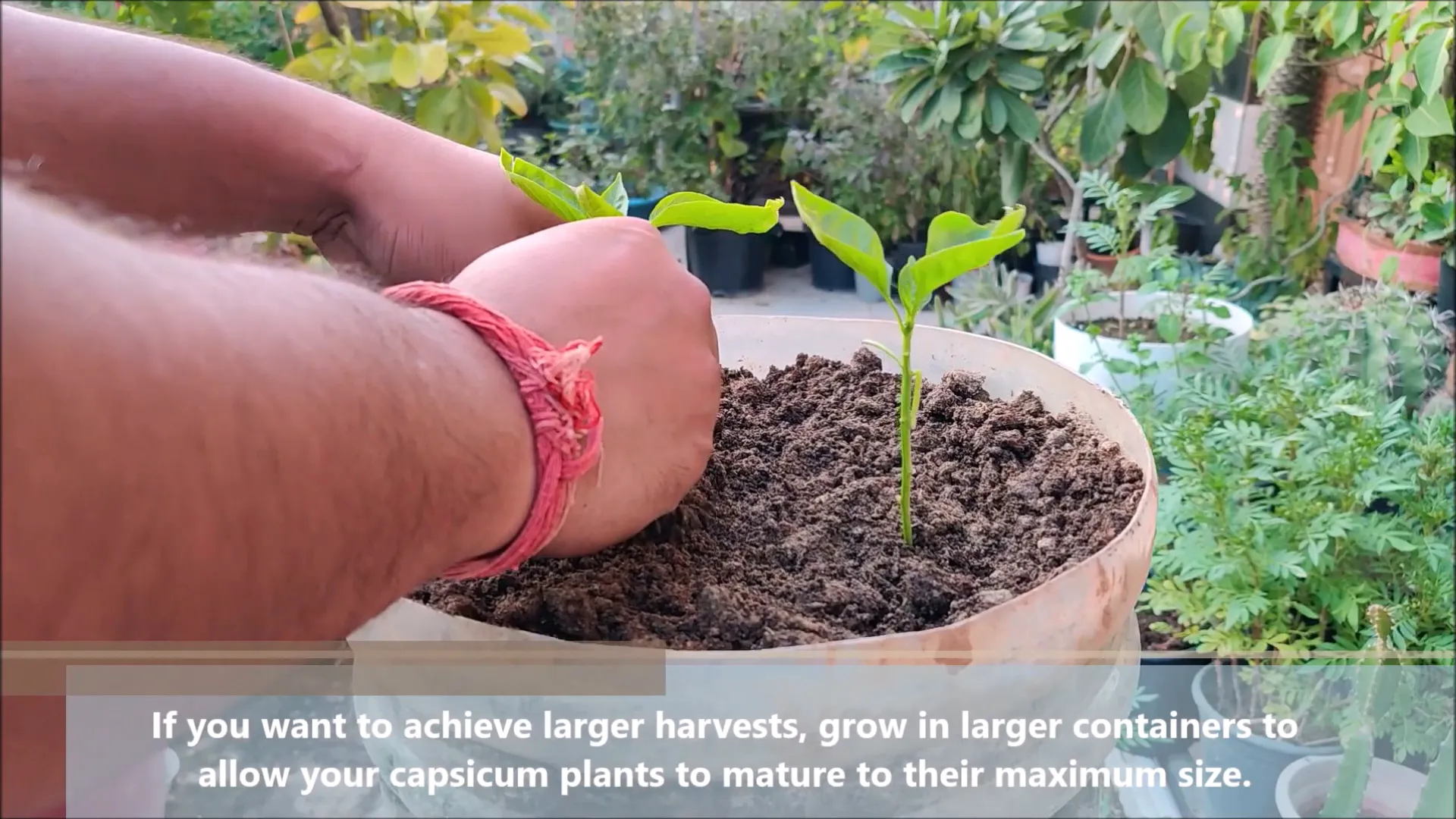
Container Selection and Soil Requirements
The health of your bell pepper plants depends considerably on the type of container you choose. Ideal containers are those of medium to large size because they will give the roots ultimatum space to spread out. Also, do not forget to provide your container with suitable drainage openings to avoid the occurrence of root fungus.
Recommended Container Sizes
Understanding how to grow bell peppers starts with selecting the right seeds that are suited for your climate.
To ensure success, knowing how to grow bell peppers involves preparing a nutrient-rich soil mix that promotes healthy growth.
- For single plants, use containers that are at least 15 inches wide.
- For two plants, opt for containers that are 18 inches wide.
Soil Requirements
The earth should be airy and light. A mix of 50% soil garden, 30% manure cattle, 20% sand river is the best. This combination not only helps in gaining the required nutrients but also in transporting them through good drainage.

Caring for Your Capsicum Plants
After the establishment of your bell pepper plants, proper care is of primary importance for thick growth and fruitful harvests. Regular maintenance confirms that your plants stay healthy and productive.
Watering Needs
Moist but not soggy soil is the ideal condition for bell pepper growth. The plants should be watered deeply, frequently, and the topmost layer of the soil should be kept slightly wet. It is preferable to water at the plants’ base since this practice will reduce leaf wetness, which is a factor in disease.
When you start to sow the seeds, remember that understanding how to grow bell peppers includes the right spacing and soil coverage for optimal germination.
Nutrient Management
The proper nutrition is essential for the growth of your sweet pepper plants that you will need to provide. The use of organic fertilizers every 15 to 18 days, mixing together two to three handfuls of it in the soil, can solve this problem. In this way, the plants will receive the necessary nutrients without being suppressed by them.
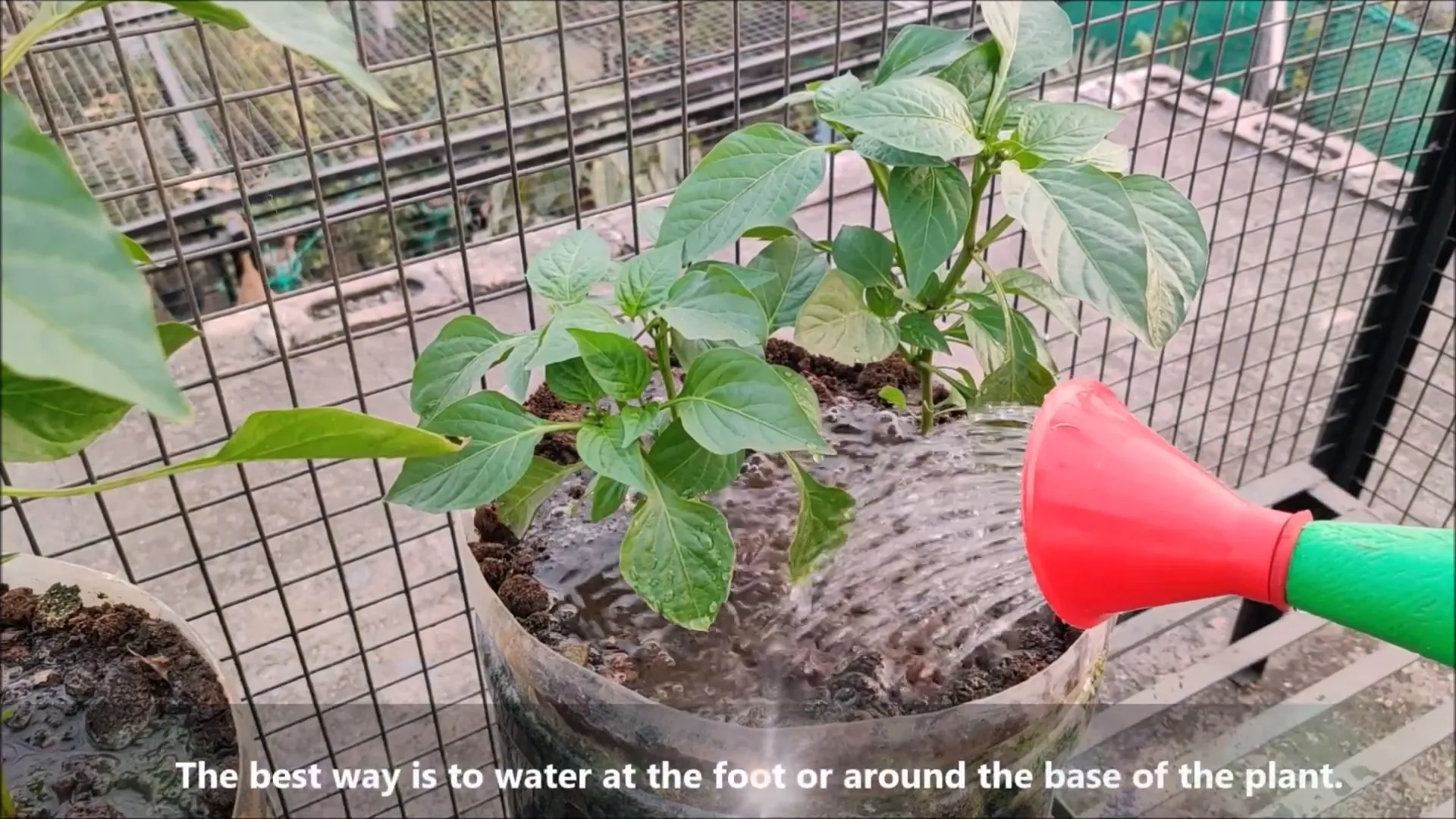
Weed Control
Weeds will be your bell peppers’ biggest enemy as they will be competing for water and nutrients. Your garden should be regularly examined for weeds and those that are spotted should be uprooted to eliminate the chances of regrowth. In this way, your capsicum plants will flourish without the competition of weeds.
Managing Pests and Diseases
In addition to keeping your bell pepper plants strong, it is crucial to handle pests and diseases correctly. The most effective way is to identify and take care of the problem in the early stages before it causes irreversible damage.
Common Pests
- Whiteflies: These small, white insects can cause leaf curl and yellowing. Use organic sprays to control their population.
- Thrips: Tiny and often overlooked, thrips can damage flowers and fruits. Regular inspections can help catch them early.
Organic Disease Control
For fighting the leaf curl diseases, you can make a neem leaf and ginger organic spray. Boil them in water, strain, and then mix with turmeric before applying to affected plants. This natural way of plant helps your greenery stay healthy without the use of harsh chemicals.
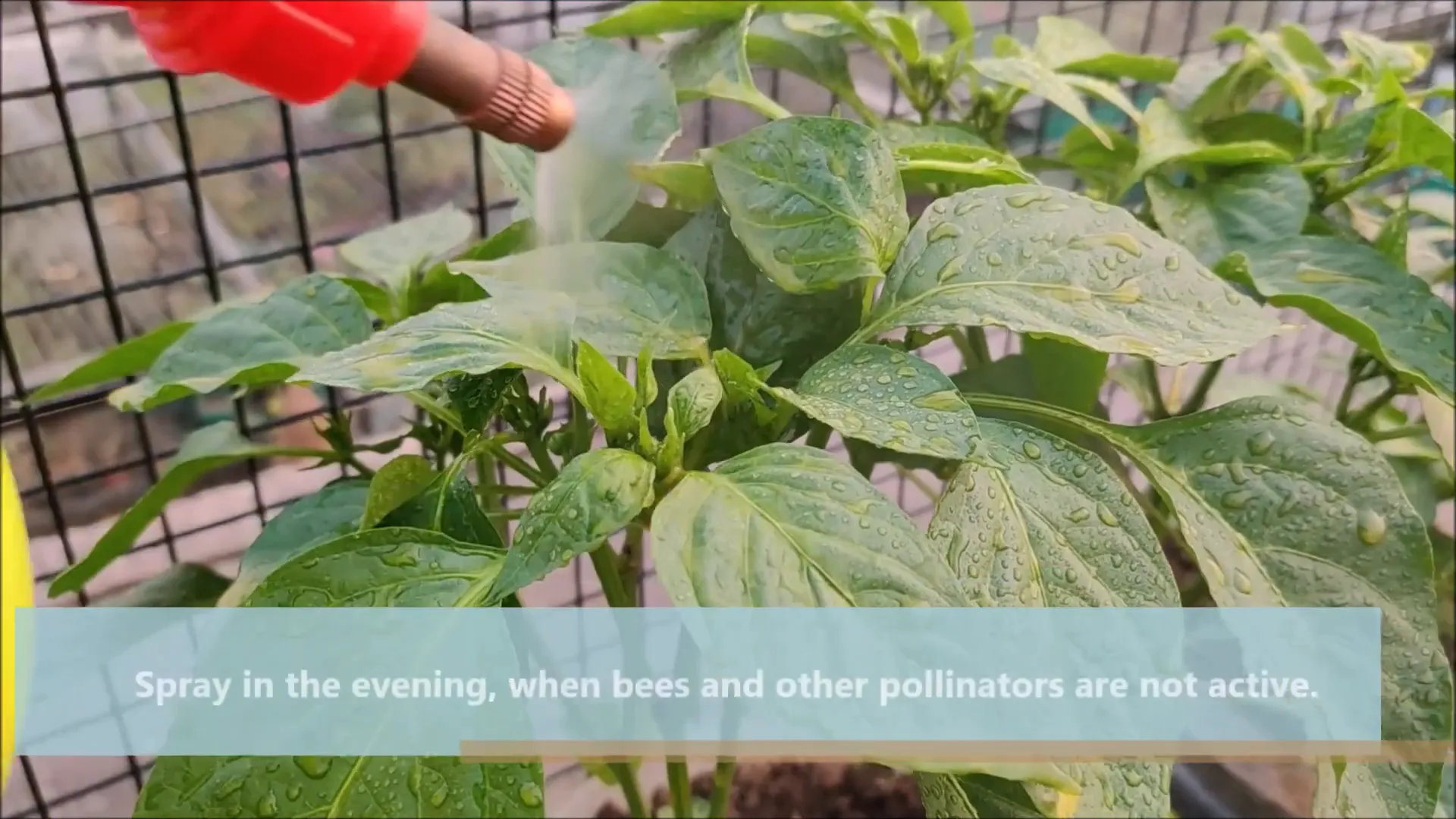
Understanding the Growth Cycle
The life cycle of bell peppers is characterized by distinct stages of growth such as germination, seedling development, flowering, and fruiting. Familiarity with these periods enables you to administer the suitable treatment at the appropriate time.
Germination and Seedling Stage
The process of germination usually takes place from 7 to 9 days under the best conditions. Seedlings need regular moisture and sunlight to grow after they have been replaced by others. It is necessary to plant them at the appropriate time into large containers for their development.
Flowering and Fruiting
Around the end of the month, your plant is likely to come out its buds and be full of flowers. The flower is self-pollinated, which means that it can pollinate itself, making it easier for you to grow bell peppers even in a limited area. After the phase in blooming, green peppers are seen,… which is a very intriguing step in the plants’ life. (Rephrasing number 2)
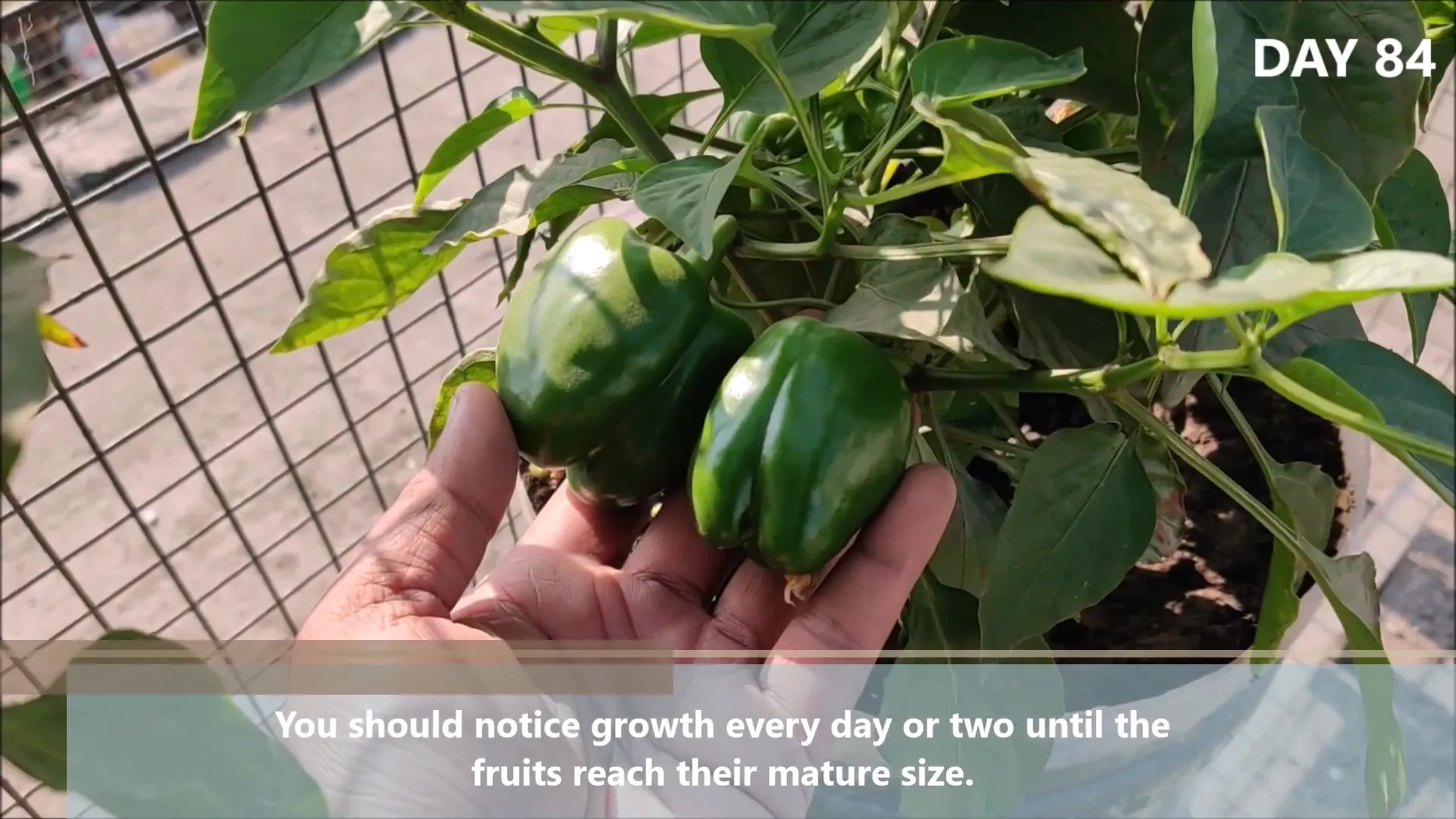
Harvesting Bell Peppers
Timely harvesting and proper methods of harvesting bell peppers are the keys for you to enjoy the real taste and full nutritional benefits of these peppers. These peppers can be picked during different maturation periods.
When to Harvest
- Green Peppers: Harvest when they reach full size, typically 60 to 65 days after transplanting.
- Yellow and Red Peppers: Allow them to ripen fully on the plant for 75 to 95 days for optimal sweetness and nutrition.
Harvesting Techniques
Peppers are best harvested from the plant with a blade or a scissor. Depending on the method, whether you leave a small stem or not it does not affect the result. This is useful for the plant and can let it produce more.
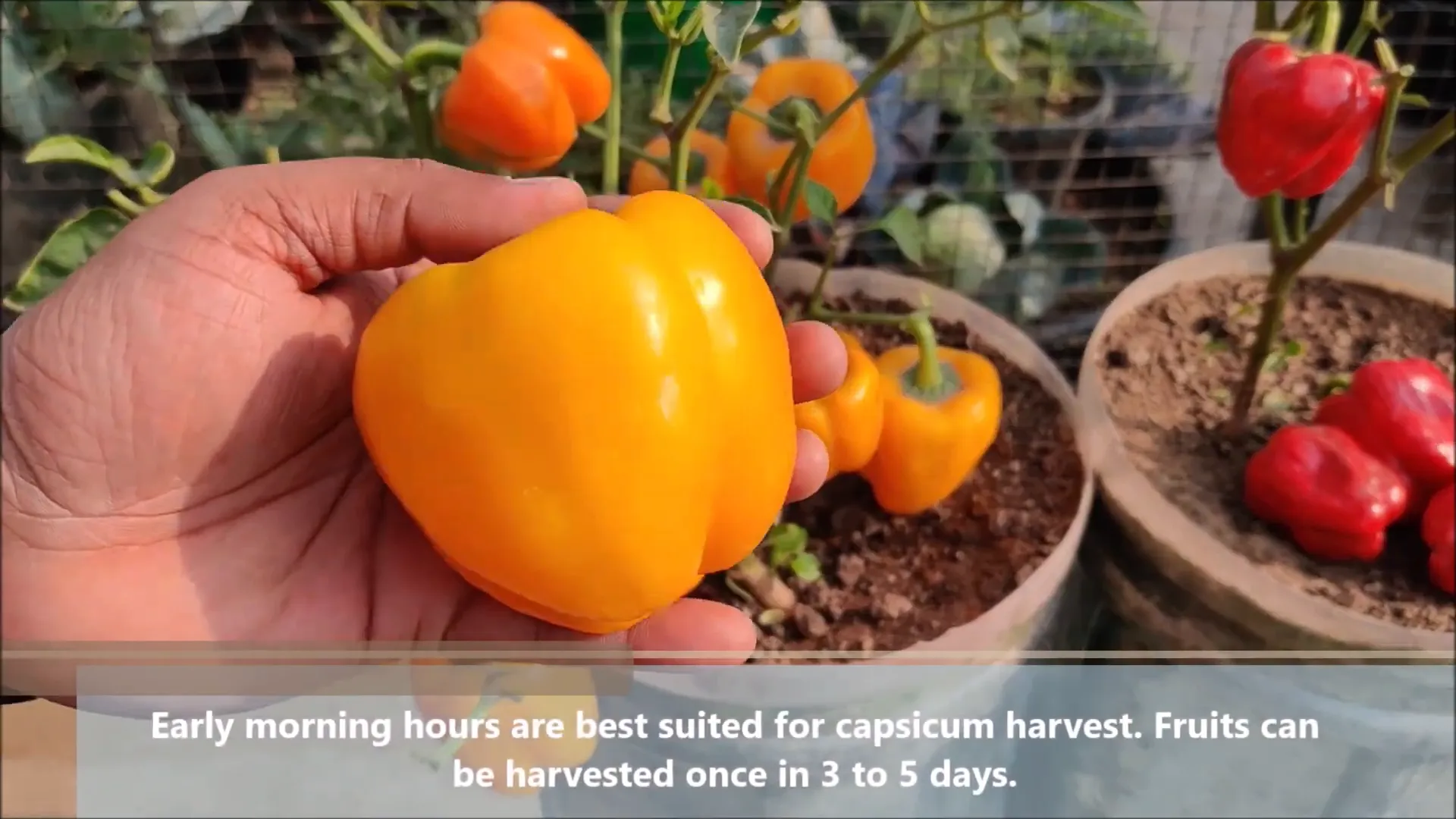
Storing Your Harvest
Once you have harvested the bell peppers, the right way to keep them is with the proper storing techniques. Sunlight, in particular, is something you should avoid directly exposing it to and finding a cool atmosphere is ideal for your storage.
Best Storage Practices
- Keep harvested peppers in a cool, dry area.
- Store them in a breathable bag or container to prevent moisture buildup.
FAQs about Growing Bell Peppers
1. How long does it take to grow bell peppers?
Depending on the variety and growing conditions, bell peppers require an average of 60 to 95 days to grow from seed to harvest.
2. Can I grow bell peppers in small spaces?
Definitely! Container gardening is the ideal means for cultivating bell peppers, which is why they are so well-suited for small garden areas or balconies.
3. What conditions do bell peppers prefer?
Love the bell peppers that are a little bit picky about the climate (18 to 28 degrees Celsius), and will perform best in total sun and good draining soil.
4. How can I tell if my peppers are ripe?
Ripe bell peppers will be bright in color and have a hard structure. They may be picked at any stage of maturity but will be sweeter to the taste if they stay longer on the plant.
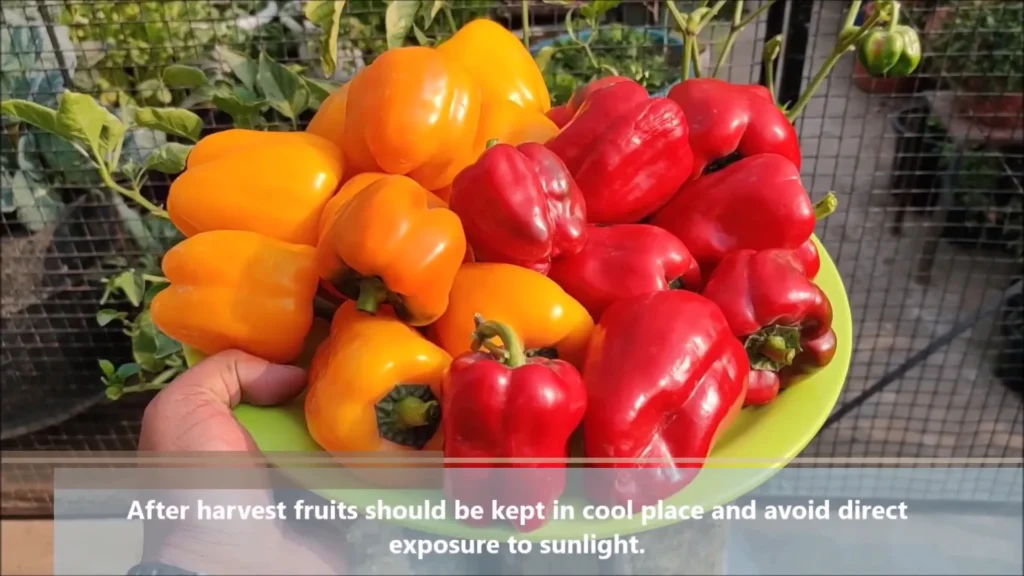
Related Articles: How To Grow Strawberries From Seed: A Step-by-Step Guide , How to Grow the World’s Hottest Pepper: Carolina Reaper in Pots
Notes:
Once you’ve harvested your bell peppers, mastering how to grow bell peppers further includes proper storage techniques to maintain their freshness.
When considering how to grow bell peppers, it’s essential to understand their specific growth requirements and care needs.
For those wondering how to grow bell peppers in limited space, container gardening is an excellent solution.
Knowing how to grow bell peppers also means recognizing the optimal temperature range and sunlight conditions they thrive in.
Finally, understanding how to grow bell peppers includes learning about the ripening process and when to harvest for the best flavor.
By implementing these practices, you will be well on your way to mastering how to grow bell peppers successfully.
In summary, learning how to grow bell peppers requires attention to detail, patience, and consistent care.
If you follow these guidelines on how to grow bell peppers, you will surely enjoy a bountiful harvest.


Pingback: How to Grow the World's Hottest Pepper: Carolina Reaper in Pots - Vidz ni Rye